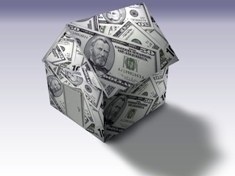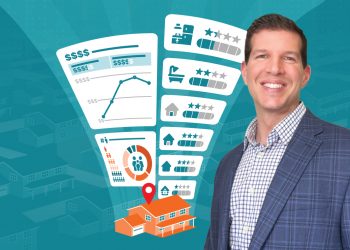 RISMEDIA, February 27, 2009-(MCT)-Mortgage rates are low, but getting them is going to cost you. New rules by Freddie Mac and Fannie Mae are upping the fees for borrowers with less than perfect credit, those in the mortgage industry say. Other increased costs reflect the uncertainty in the mortgage market, as lenders try to reduce their risk and anticipate rates.
RISMEDIA, February 27, 2009-(MCT)-Mortgage rates are low, but getting them is going to cost you. New rules by Freddie Mac and Fannie Mae are upping the fees for borrowers with less than perfect credit, those in the mortgage industry say. Other increased costs reflect the uncertainty in the mortgage market, as lenders try to reduce their risk and anticipate rates.
“It’s an interesting time, in that mortgage rates are historically low,” said Amy Bohutinsky, vice president of communications for Zillow.com. “But at the same time, while rates are low, lending standards are still really tight. What that means is that people who qualify for these really good rates … fall under a strict and narrow set of guidelines.”
Even borrowers with decent credit aren’t immune to higher fees and mortgage costs. In general, to get the low rates that make the headlines, borrowers also are often paying more points, or prepaid interest, that bring the mortgage rate down.
If you look at where mortgage pricing was a year and a half ago, and where it is now, “there have been a slew of changes, mostly negative from a borrower’s perspective,” said Rick Allen, vice president of MortgageMarvel.com, a mortgage website.
The most recent changes started to show up in lenders’ rate sheets this year.
New risk-based pricing from Freddie Mac and Fannie Mae adds fees to mortgages based on a borrower’s credit score. In order to avoid the extra fees, borrowers need to have a FICO score of 740 or higher, said Dan Green, loan officer with Mobium Mortgage in Cincinnati and author of TheMortgageReports.com. The new rules take effect in April at Fannie and Freddie, but lenders incorporated them into rate sheets by the middle of January, he said.
The new fees, called Loan Level Price Adjustments, have been an unwelcome surprise for some homeowners interested in taking advantage of low rates.
“It has created a different pricing scenario from one consumer to the next,” Allen said. “What you see in the Sunday paper could be perfectly close for one borrower. The guy next door could be 1% higher.”
Charges have also gone up for those who extract equity from their home through a cash-out refinance, Allen said. Condo financing could also involve added costs, Green said.
According to Freddie Mac’s weekly rate survey, the average rate on a 30-year fixed-rate conforming mortgage was 5.05% in January 2009, and a payment of an average 0.7 point was required to obtain the rate. A year ago, the average rate was 5.76%, but it took less to get that rate-an average 0.4 point was required.
There’s an inverse relationship between points and rate; the more points you pay, the lower the rate becomes. A point is 1% of the mortgage amount, charged as prepaid interest.
“If the points are creeping up a little bit, it is a sign that lenders are looking for money up front as opposed to over time,” Allen said.
In general, government intervention in the mortgage market is making rates unpredictable, causing lenders to price more conservatively, said Julian Hebron, vice president and mortgage consultant at RPM Mortgage in San Francisco.
Before paying points, consumers need to decide whether the move makes sense for them, or if they’d be better off obtaining a mortgage with a higher rate while paying zero points. The decision hinges on how long the borrower plans on staying in the home, and how long it will take for paying points to pay off, said Ethan Ewing, president of Bills.com. The more time a homeowner plans on staying in the home, the more that paying points makes financial sense.
But Hebron noted that paying points gets borrowers a bigger discount these days.
“Historically, one point in fee gets borrower a rate that’s about 0.25% to 0.375% lower. Now one point gets the rate about 0.625% to 0.875% lower,” he said in a recent analysis.
Recently, Hebron could get a $417,000, 30-year fixed-rate mortgage at a rate of 5.625%, paying zero points. By paying one point (or $4,170) on the same loan, the rate went down to 4.875%, saving the borrower $261 per month in interest cost.
“At this monthly savings rate, it takes 16 months to pay back the $4,170 and everything from that point forward is benefit,” he said. “Traditional breakeven periods are double this.”
Other fee increases for borrowers today include those on underwriting and processing, which range from $300 to $400 on average. It takes more work and expertise to process a fully documented file than the no-document loans that were popular a couple of years back, and that is reflected in the higher charges, Hebron said.
Those attempting a refinance can also expect to pay an appraisal fee-maybe $300 or so-up front, Hebron said. Mortgage rate lock fees are also becoming more common, though it’s not impossible to find a firm that will not charge for that service, he added.
“For title and settlement fees, the fees that we are seeing the largest increases in are the real-estate transfer taxes charged by cities and counties,” Ewing says. One tip for borrowers who are refinancing: Using the same title-insurance firm from your last mortgage will likely save money.
Title and settlement fees may also be on the rise, as firms have gone out of business and surviving companies can raise prices, Ewing said. One tip for borrowers who are refinancing: Using the same title insurance firm from your last mortgage will likely save money, he said.
In total, mortgage fees could cost you 3% or so of the loan amount, according to HSH Associates, a mortgage-information publisher.
© 2009, MarketWatch.com Inc.
Distributed by McClatchy-Tribune Information Services.










